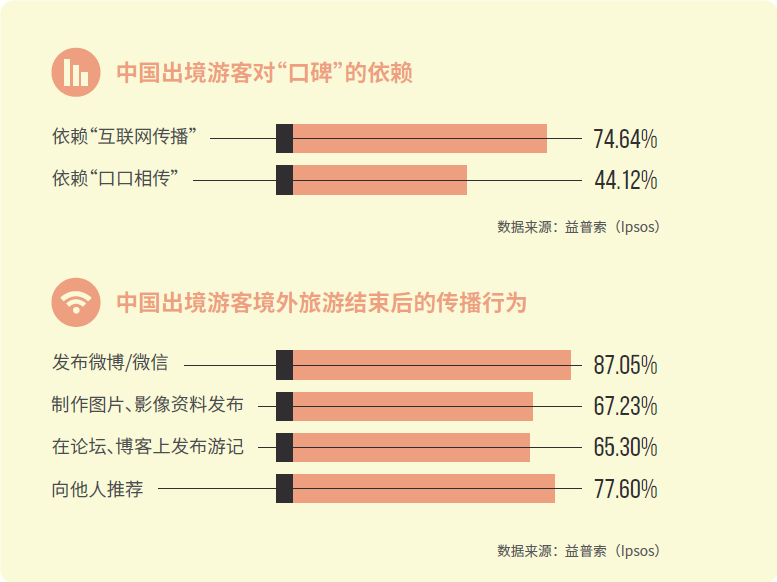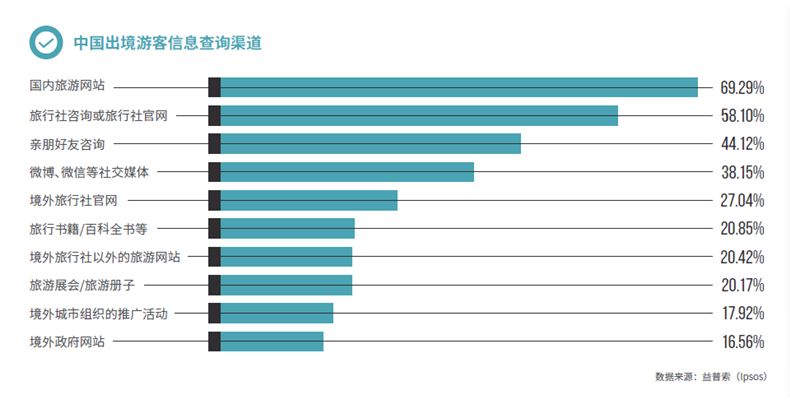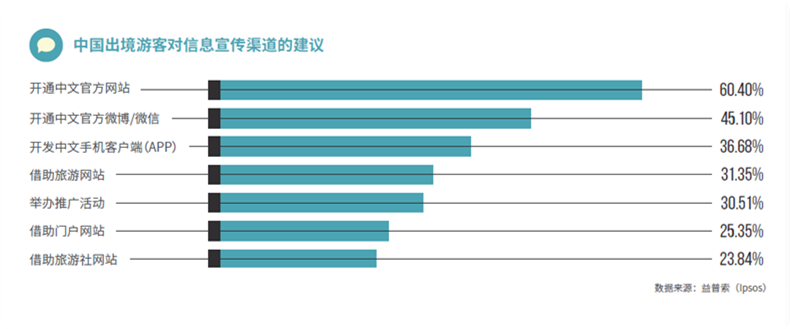Tourism businesses consist of three parts, namely, tourism, transportation and passenger transport, as well as accommodation represented by hotel, and they are the three pillars of the tourism industry.
With the increase in national income, Chinese tourism consumers have maintained a rapid growth, rising by 53.5% year on year in 2011. In 2015, Chinese tourists who chose outbound traveling reached 120 million, with outbound tourists and overseas tourism consumption both ranking first in the world. 2015 witnessed a rapid growth in the market of mobile online tourism, and now has entered the mature stage, with mobile clients being the major booking channel. Meanwhile, the emerging of social platforms such as Weibo and WeChat has profoundly impacted and changed Chinese people’s traditional consumption habits. Take outbound traveling for instance, based on the research of Ipsos on Chinese citizens’ outbound tourism consumption market, social platforms have become the major channel for people to make purchase decisions on tourism products and to share travel experience.

At the same time, a more open and popular social environment not only makes OTA enterprises to develop rapidly, but also gives birth to a number of new types of tourism products and enterprises. For instance, Airbnb, an "Internet rental broker” without any lodging, has grown into a business giant worth 20 billion dollars in less than 10 years since its establishment in 2008. The night rents of Airbnb has surpassed Hilton, the hotel giant.

From many successful cases, it can be seen that businesses, facing the robust tourism market and entirely new consumption characteristics, could stand out from the competitive traditional tourism market through digital innovation and achieve business success.
To seize the market opportunities in front of the challenges of digital transformation, the most critical thing for tourism enterprises is to find the large population of potential users scattered on the social platforms, to provide users with personalized services and tourism products, and to retain users and enhance user value with high quality user experience.
Help brands to establish a user-friendly brand image, enhance the brand awareness and popularity on social platforms; enable users to deepen the brand knowledge with more lifelike tourism content.
Build a social platform for brands to interact with and serve tourists, make more practical and effective content and communication strategies, to draw tourists’ attention and retain potential consumers through entertaining tourism content and sincere interactions with tourists.

Get user insight with big data, focus on potential consumers to achieve personalized content marketing targeting at segmented users; create personalized experiences and scenes to draw traffic from tourism transaction platforms.
According to the different needs of differentiated groups, design more creative and competitive popular tourism products, such as Cobranding packages, hit products, promotions, etc., to obtain more business benefits
Design a more effective membership system, operations and points strategy for travellers to enhance their loyalty to the brands
Stimulate tourists to participate more in social interaction, brand promotion and product promotion, to form the spontaneous circulation of brands dissemination on social platforms.